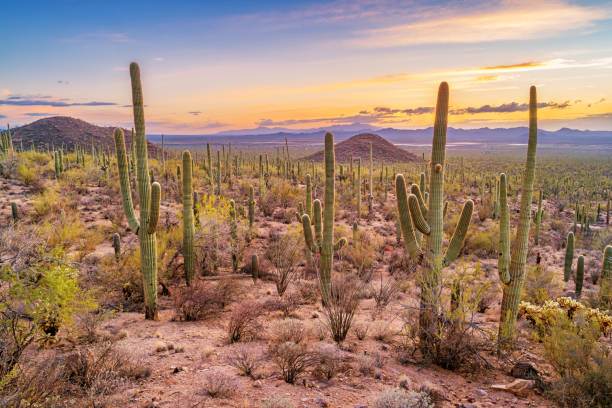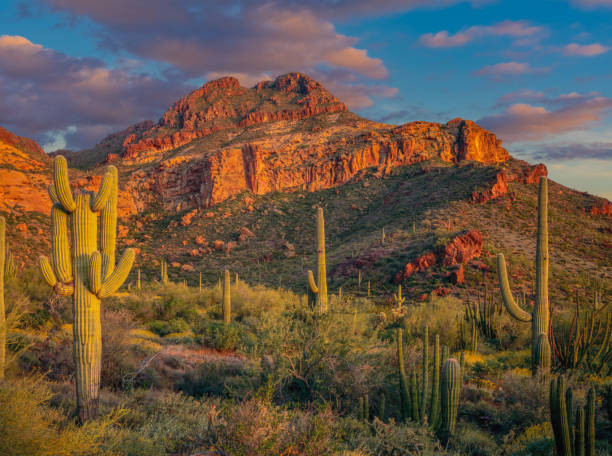Sonoran Desert, USA
The Sonoran Desert, which stretches over Arizona, California, and Mexico, is a stunning terrain rich in indigenous wildlife and vegetation. The Saguaro and Organ Pipe cactus, as well as the yucca plant, which looks like a big turnip and thrives in the desert, are two of the key attractions. The Sonoran Desert differs from surrounding deserts (such as the Great Basin, Mojave, and Chihuahuan deserts) in that it has subtropical temperature in winter and two seasons of rainfall (as opposed to the Mojave's dry summers and freezing winters). This results in a stark contrast between aridity and wetness. Many plants not only survive but thrive in the Sonoran Desert's severe circumstances.
Many have acquired particular adaptations to the arid environment. The Sonoran Desert has more plant species than any other desert on the planet due to its bi-seasonal rainfall cycle. The Sonoran Desert has plant genera and species from the agave, palm, cactus, and legume families, among others. The Gila monster, bobcat, mule deer, antelope jackrabbit, burrowing owl, greater roadrunner, western diamondback rattlesnake, and elf owl are among the many animals, birds, and other species that call the Sonoran Desert home. The desert area is home to 350 bird species, 20 amphibian species, over 100 reptile species, 30 native fish species, over 1000 natural bee species, and over 2,000 native plant species.
With several Native American tribes residing in the area and towns such as Phoenix and Tucson, Arizona is an ideal destination for a family trip. The Grand Canyon National Park in Arizona, for example, has multiple national monuments and environmental preserves, including the Kaibab National Forest. There are additional deserts, such as the Mojave Desert.

















